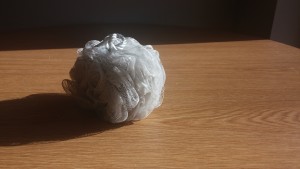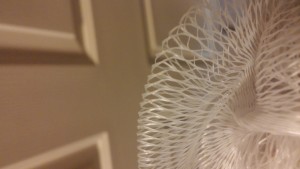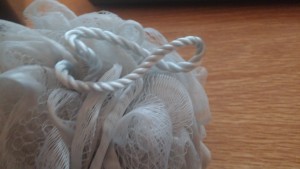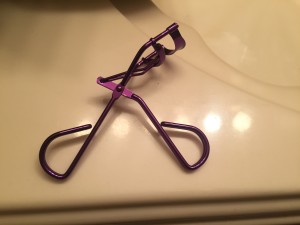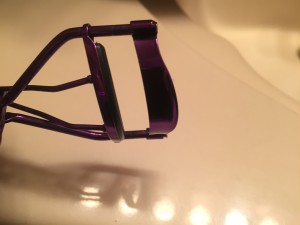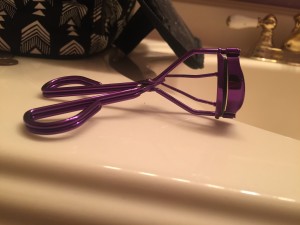This is an interesting topic to write about trying to recall the way I was taught Thanksgiving. Honestly, the more than I think of it my teacher taught it to the class by reading a children’s book that included pictures. I remember that it involved the pilgrims, but more importantly I knew for sure that dinner was turkey. Now regardless of whether the facts are true about what was served for that dinner is irrelevant. The short book that she read did in fact have a turkey on the dinner table, I remember that it seemed like a meal that was more formal than a regular dinner, and lastly that it was a time to be grateful for what we had. That is how I was taught Thanksgiving in school. Although a book gave me the brief background of how this holiday became so important, our class did a little art to remind us that Thanksgiving was soon approaching. I hope many of you had a similar experience but our class made these paper turkeys, and we would outline out hand then cut it out. Then of course draw a head to make it look like a turkey. That was the little art assignment that we would do in class and hang them up. All in all back then I didn’t think much of it all, I just took in that it was a holiday by the pilgrims, that ate turkey to give thanks. Now that I am older it is much more than that as all of us would agree. Thanksgiving to this day is one of my favorite holidays as some of you might agree. I must say I was happy with the way I was taught in elementary school.
2.2 Prownian Analysis
Step 1, Description: The object is a light gray color. Is a spongy material, if one were to squeeze it with their hands it would compress easily then expand back to its prior size. The object is about 4 and a half to 5 inches in diameter and is in a crude shape of a sphere. It has a small rope, similar in color, that looks as if it could be hung from it. Up close the material is a netting that looks to be made out of a synthetic material. The netting appears to be in long strands that is rolled up and held together with something. Most of all it was found in the shower to be along with other body care products. The object was wet prior to me drying it. It smells of a body wash one may find in the bottle next to the object. The material that makes up this object may look coarse and hard but is rather soft and durable. Looking at the object and moving it back and forth in my hands I noticed my hands to be relieved from the dry skin I had on the surface.
Step 2, Deduction: One can deduce that this object is intended to scrub skin off based off of how simple it can. Along with how soft it is the user could use it throughout the body without causing any serious abrasions to the skin. Along with its placement in the bathroom one could use this in lieu of a wash clothe for the added benefit of removing skin. Due to the smell of the object it has been in recent contact with a body wash that smells distinctly the same.
Step 3, Speculation: The user of this object can be male or female. This product helps promote removal of dry skin, allowing the user to feel that their skin is healthier than usual. Along with this the user will most likely be female more than male since dry skin on males is more socially acceptable. The user would continually purchase this product since it is viewed as an effective product.
Questions about the loofah:
Does it have multiple uses?
What are the downsides, if any?
How often is a loofah replaced and why is it best to replace?
Is there a way to reduce the amount of bacteria that is found on the loofah?
What was the original intention of the loofah if it has the possibility of promoting bacteria growth?
Bibliography
Bottone, E. J., A. A. Perez, and J. L. Oeser. 1994. “Loofah Sponges as Reservoirs and Vehicles in the Transmission of Potentially Pathogenic Bacterial Species to Human Skin”. JOURNAL OF CLINICAL MICROBIOLOGY. 32 (2): 469.
In this peer-reviewed article that is found in a highly respected journal, states that the bath sponge commonly used is a “vehicle” to move bacteria throughout the body. The authors state that the sponge is a common carrier of bacteria that survives and thrives on the skin that is removed during the cleaning process. The statements a backed with a plethora of scientific test results, leading to the possible assumption that the object is not in favor of the user or their intentions.
Bratskeir, Kate. “You Should Probably Stop Using A Loofah In The Shower. Sorry.” The Huffington Post. July 29, 2014. Accessed January 23, 2016. http://www.huffingtonpost.com/2014/07/29/loofah-clean-healthy_n_5613734.html.
The author of this open web article, takes the stance that this object is used improperly. The author states that the object is used during shower periods to help promote a cleaner self but states that it is clearly a wrong notion. In the article the author says that the loofah sponge is a bacteria covered scrub that isn’t helping rather making you worse off.
- This object is four or five inches in height. It is made out of what appears to be thin metal rods painted a metallic purple. The metal curves into two separate handles that have small holes at the end, maybe to put fingers into, comparable to scissor handles. Connecting the two handles is a metal joint that allows for movement. Connected to the two handles is is curved platform. When the arms of the devices are separated the platforms separate. When separated there is a small plastic cushioning in between the platforms. The object is used my humans, seeing as there is a place for fingers. Based on the color the device might be geared more towards women. The curved platform suggests that it might be used on an area that has curves. The person using this could be using it to enhance a feature. Seeing as it was found it a woman’s makeup bag it is likely that it is for enhancing eyelashes. The person using this is probably above the age of 13, responsible enough to make sure she doesn’t accidentally poke something.
- How did the person using this device know how to use it?
Has the device changed over time?
Why and when was this device invented?
- Pennington, Meli. “Beauty Inventions: The Eyelash Curler.” Wild Beauty RSS. February 5, 2013. Accessed January 23, 2016. http://wildbeautyworld.com/2013/02/05/beauty-inventions-the-eyelash-curler/.
In this article it says the eyelash curler was first invented in 1925, and continued to be changed and improved throughout time. As women were getting more close ups in films it caused the general public to want to achieve the same look they saw on the silver screen. This helped women achieve that goal.
- Ramasamy, Balasubramanian, and Stewart Armstrong. 2010. “Penetrating eye injury caused by eyelash curlers—a cause for concern?” Graefe’s Archive for Clinical and Experimental Ophthalmology : Incorporating German Journal of Ophthalmology. 248 (3): 301-303.
This article speaks about the dangers of the eyelash curler, and briefly touches on the history. Eyelash curlers have evolved throughout time but there is still danger in using them. The case study is about a 19 year old girl who had poked her self in the left eye many times while curling her eyelashes.
- Pennington did not show too much similarity to Prown, she did look and try to discover why things because they way they were through speculation. Much of the information provided were names and dates that applied to the eyelash curler. Ramasamy looked into how an eyelash curler could cause damage to the person using it, which aligned with what I was inferring about the device being for an older audience by using deductions.
- « Previous Page
- 1
- …
- 20
- 21
- 22
- 23
- 24
- …
- 26
- Next Page »
